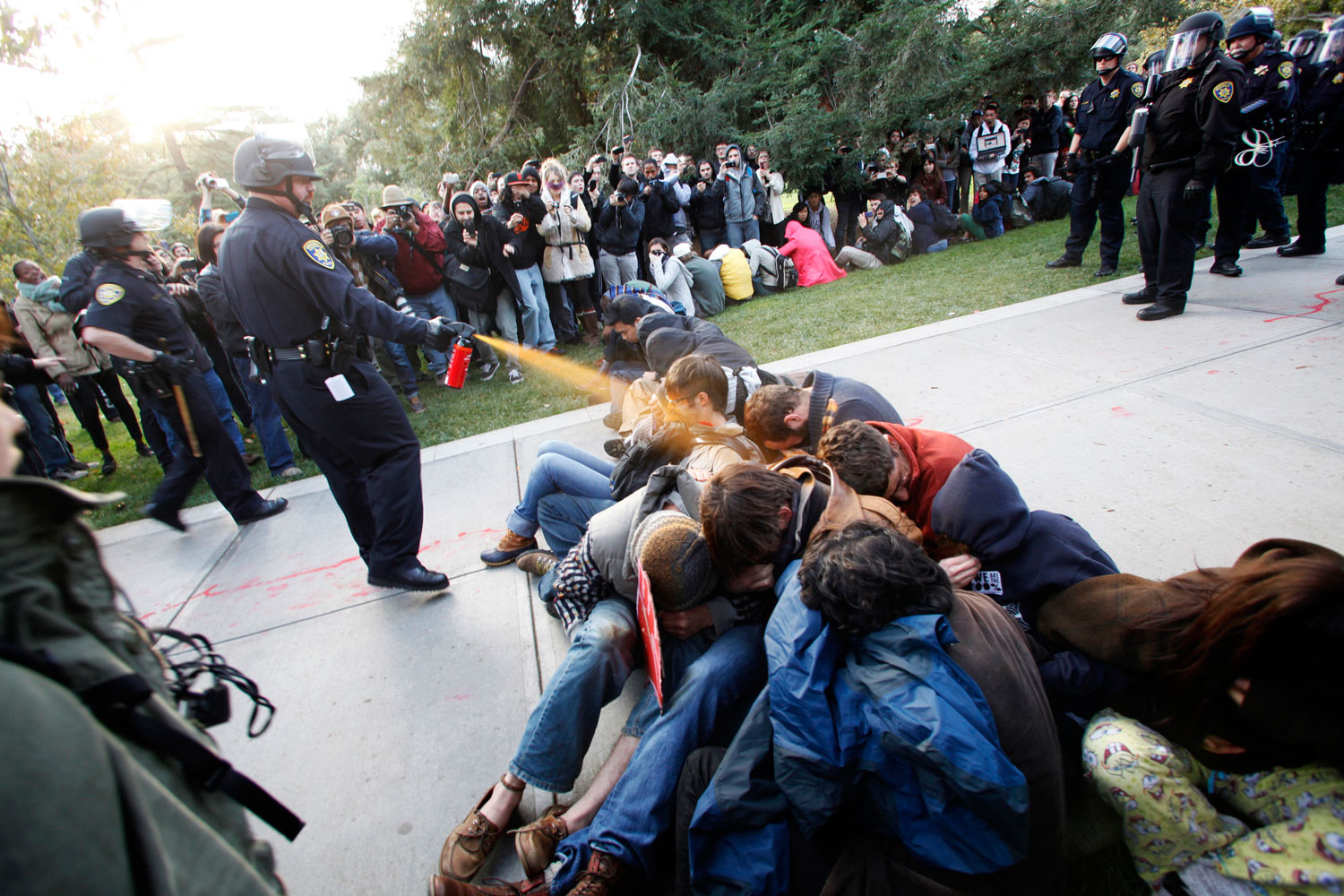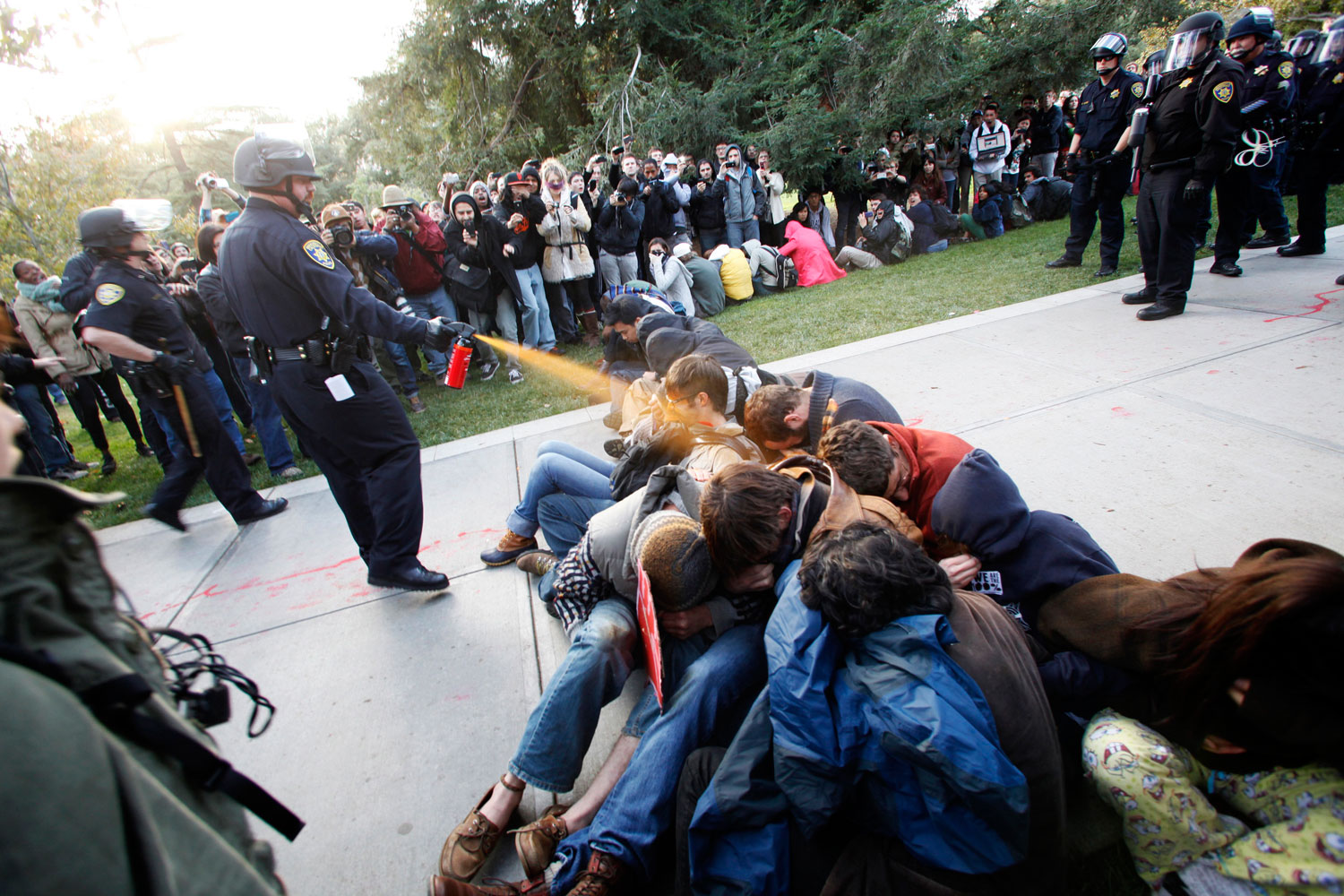
Nothing disperses a crowd like a shot of chili pepper to the eye. Pepper spray—scientifically known as oleoresin capsicum spray—is banned in war but has made its presence known during the Occupy Wall Street protests as one of the most-used methods of crowd control. Its status as a less-than-lethal weapon gives police the right to use pepper spray as a tactic to tame rowdy protesters, but are they using it properly? A number of incidents have called attention to the liberal usage of the spray against protesters appearing both defenseless and peaceful. Indeed, a quick burst of orange is enough to bring even the hardiest protester to his or her knees: the active ingredient, capsaicin, inflames eyes, penetrates skin, and irritates mucous membranes. And the symptoms can last for days.
The use of pepper spray has proven to be harmful to more than just those hit with it. At the University of California, Davis on Nov. 18, police doused dozens of seated non-violent protesters with pepper spray. Numerous cameras in the crowd filmed the incident, inciting an online outrage. The UC Davis police chief has been put on administrative leave along with two officers seen in the video thoroughly pepper-spraying the protesters. An apology from the university’s chancellor has done little to quell the Internet’s fury. Images of the cop casually pepper-spraying protesters have gone viral, with the likeness of the lieutenant spliced into other historical situations, can of pepper spray in hand. All humor aside, the university is taking the situation seriously, launching an investigation into the police department’s use of the force. Here, TIME looks at the prevalence of pepper spray in other recent protests.
Nick Carbone is a reporter at TIME. Find him on Twitter at @nickcarbone.



More Must-Reads from TIME
- Donald Trump Is TIME's 2024 Person of the Year
- Why We Chose Trump as Person of the Year
- Is Intermittent Fasting Good or Bad for You?
- The 100 Must-Read Books of 2024
- The 20 Best Christmas TV Episodes
- Column: If Optimism Feels Ridiculous Now, Try Hope
- The Future of Climate Action Is Trade Policy
- Merle Bombardieri Is Helping People Make the Baby Decision
Contact us at letters@time.com